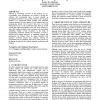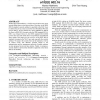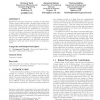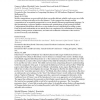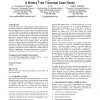ACMSE
2006
ACM
14 years 5 months ago
2006
ACM
This paper describes the idea of embodied data objects. Using this concept, everyday objects can be used to represent bits and bytes of active information. These data objects can ...
ACMSE
2006
ACM
14 years 5 months ago
2006
ACM
Recent research on computational modeling of visual attention has demonstrated that a bottom-up approach to identifying salient regions within an image can be applied to diverse a...
ACMSE
2006
ACM
14 years 5 months ago
2006
ACM
Software is increasingly pervasive in the products we use. Consequently, more programmers are needed to develop the software, and consequently there is unmet demand on programming...
ACMSE
2006
ACM
14 years 5 months ago
2006
ACM
Standardized middleware is used to build large distributed real-time and enterprise (DRE) systems. These middleware are highly flexible and support a large number of features sin...
ACMSE
2006
ACM
14 years 5 months ago
2006
ACM
Without physical boundaries, a wireless network faces many more security threats than a wired network does. Therefore, in the IEEE 802.16 standard a security sublayer is specified...
ACMSE
2006
ACM
14 years 5 months ago
2006
ACM
Applications involving interactive modeling of deformable objects require highly iterative, floating-point intensive numerical simulations. As the complexity of these models incr...
ACMSE
2006
ACM
14 years 5 months ago
2006
ACM
elow are abstracts of student-faculty collaborative work presented at regional, national, and international conferences. Gregory Adkins, Elizabeth Carter, Amanda Micai, and Sarah M...
ACMSE
2006
ACM
14 years 5 months ago
2006
ACM
A software framework is a technology that enables software reuse, potentially yielding rich dividends but requiring significant longterm investment. However, a framework is not a ...
ACMSE
2006
ACM
14 years 5 months ago
2006
ACM
This paper presents the preliminary findings of the Electronic Portfolio Student Perspective Instrument (EPSPI) developed to ascertain student attitudes and intended uses of ePort...
ACMSE
2006
ACM
14 years 5 months ago
2006
ACM
Support Vector Machines (SVMs) have successfully shown efficiencies in many areas such as text categorization. Although recommendation systems share many similarities with text ca...

